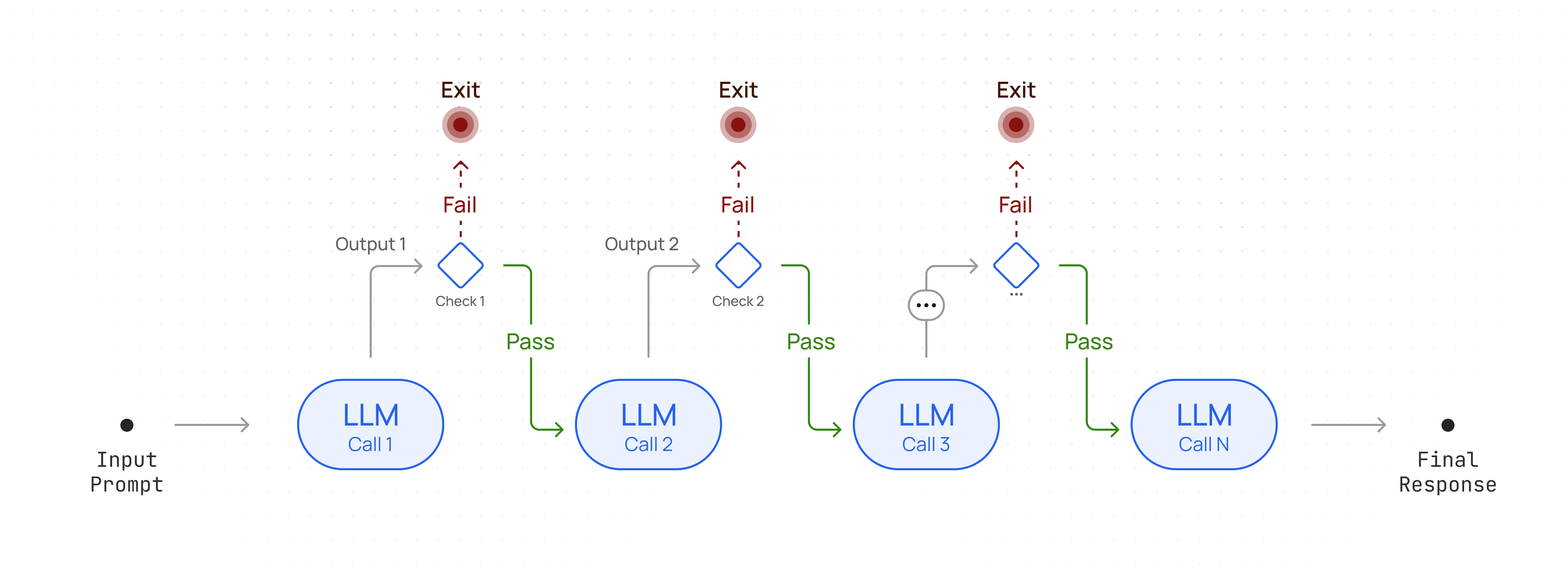Workflow Architecture
Chain multiple LLM calls sequentially to process complex tasks.
Sequential Workflow Cookbook
For a more detailed walk-through refer to the notebook hereSetup Client
Implement Workflow
Example Usage
Use cases
- Generating Marketing copy, then translating it into a different language.
- Writing an outline of a document, checking that the outline meets certain criteria, then writing the document based on the outline.
- Using an LLM to clean and standardize raw data, then passing the cleaned data to another LLM for insights, summaries, or visualizations.
- Generating a set of detailed questions based on a topic with one LLM, then passing those questions to another LLM to produce well-researched answers.